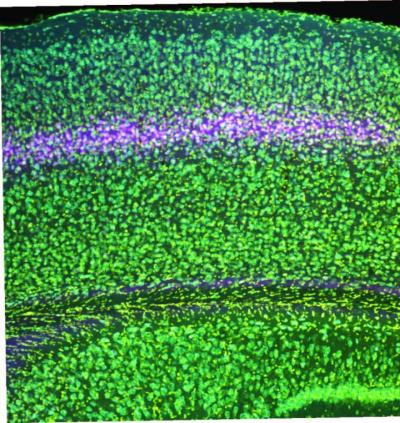
Researchers used a genetic technique to knock out NMDA receptors in layer 4 of the visual cortex of mice. Credit: Bear Lab/ Picower Institute for Learning and Memory.
MIT Professor Mark Bear’s lab has discovered new cellular mechanisms serving visual recognition memory, in which the brain learns what sights are familiar so it can focus on what’s new, and of a potential therapy for amblyopia, a disorder where children born with disrupted vision in one eye can lose visual acuity there permanently without intervention. Both of these depend on the presence of NMDA receptors in the neurons in layer 4 of the cerebral cortex, an area that is thought to directly receive visual information.